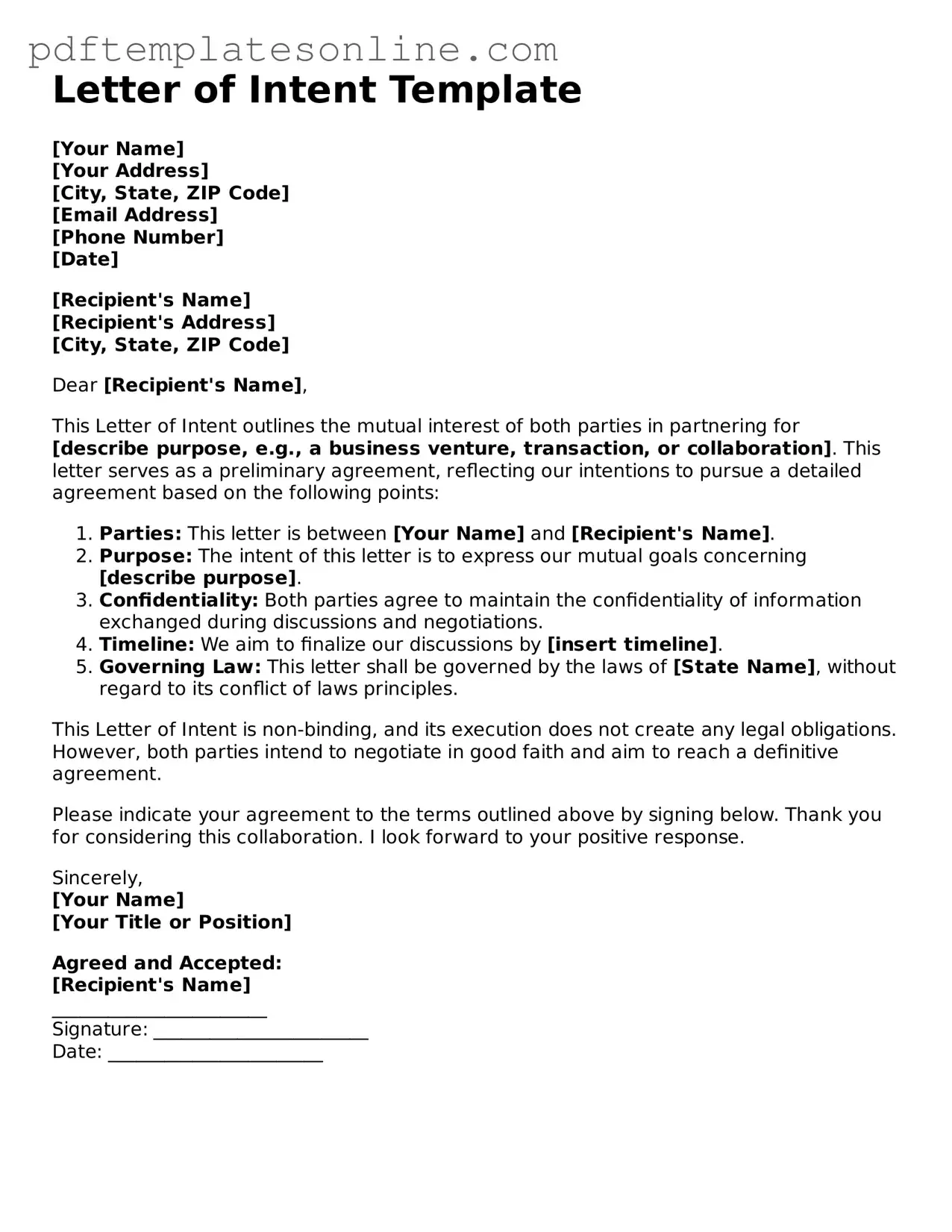Filling out a Letter of Intent (LOI) can be a crucial step in various processes, from business negotiations to academic applications. However, many individuals make common mistakes that can undermine their intentions. Understanding these pitfalls can help ensure that your LOI effectively communicates your goals and intentions.
One frequent mistake is failing to clearly define the purpose of the letter. A vague or ambiguous statement can leave the recipient confused about your intentions. It's essential to articulate your objectives clearly. Whether you are expressing interest in a partnership, applying for a program, or proposing a project, being specific will strengthen your position.
Another common error involves neglecting to address the recipient properly. Using the wrong name or title can come across as unprofessional and may diminish the impact of your letter. Always double-check the recipient's details to ensure you are addressing them correctly. This small step can make a significant difference in how your letter is received.
Many people also make the mistake of overloading the letter with unnecessary details. While it is important to provide context, excessive information can distract from your main points. Stick to relevant facts and keep your letter concise. A focused message is more likely to resonate with the reader.
Additionally, failing to proofread can lead to grammatical errors and typos that detract from the professionalism of your LOI. Mistakes in spelling or punctuation can create a negative impression. Taking the time to review your letter carefully can help you catch these errors and present a polished document.
Another mistake involves not including a call to action. A Letter of Intent should guide the recipient on the next steps. Whether you want them to contact you for further discussion or provide additional information, clearly stating your desired outcome can facilitate a productive response.
Lastly, many individuals overlook the importance of personalization. A generic letter may fail to engage the recipient. Tailoring your LOI to reflect the specific interests or needs of the person or organization you are addressing can make a significant impact. Show that you have done your research and understand their goals.
By avoiding these common mistakes, you can enhance the effectiveness of your Letter of Intent. A well-crafted LOI can open doors and create opportunities, so take the time to ensure that your message is clear, professional, and engaging.
